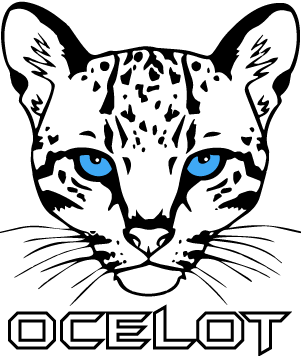|
|
3 years ago | |
|---|---|---|
| .circleci | 4 years ago | |
| .github | 5 years ago | |
| docker | 4 years ago | |
| docs | 4 years ago | |
| images | 3 years ago | |
| postman | 7 years ago | |
| samples | 4 years ago | |
| src | 3 years ago | |
| test | 4 years ago | |
| .dockerignore | 4 years ago | |
| .editorconfig | 5 years ago | |
| .gitattributes | 5 years ago | |
| .gitignore | 6 years ago | |
| Directory.Build.props | 5 years ago | |
| GitVersion.yml | 7 years ago | |
| LICENSE.md | 7 years ago | |
| Makefile | 4 years ago | |
| Ocelot.sln | 4 years ago | |
| README.md | 3 years ago | |
| build.cake | 3 years ago | |
| build.ps1 | 4 years ago | |
| build.sh | 4 years ago | |
| codeanalysis.ruleset | 7 years ago | |
| releasenotes.md | 5 years ago | |
README.md
Ocelot
Ocelot is a .NET API Gateway. This project is aimed at people using .NET running a micro services / service oriented architecture that need a unified point of entry into their system. However it will work with anything that speaks HTTP and run on any platform that ASP.NET Core supports.
In particular I want easy integration with IdentityServer reference and bearer tokens.
We have been unable to find this in my current workplacewithout having to write our own Javascript middlewares to handle the IdentityServer reference tokens. We would rather use the IdentityServer code that already existsto do this.
Ocelot is a bunch of middlewares in a specific order.
Ocelot manipulates the HttpRequest object into a state specified by its configuration until it reaches a request builder middleware where it creates a HttpRequestMessage object which is used to make a request to a downstream service. The middleware that makes the request is the last thing in the Ocelot pipeline. It does not call the next middleware. The response from the downstream service is retrieved as the requests goes back up the Ocelot pipeline. There is a piece of middleware that maps the HttpResponseMessage onto the HttpResponse object and that is returned to the client. That is basically it with a bunch of other features!
Features
A quick list of Ocelot's capabilities for more information see the documentation.
- Routing
- Request Aggregation
- Service Discovery with Consul & Eureka
- Service Fabric
- Kubernetes
- WebSockets
- Authentication
- Authorization
- Rate Limiting
- Caching
- Retry policies / QoS
- Load Balancing
- Logging / Tracing / Correlation
- Headers / Method / Query String / Claims Transformation
- Custom Middleware / Delegating Handlers
- Configuration / Administration REST API
- Platform / Cloud Agnostic
How to install
Ocelot is designed to work with ASP.NET Core only and it targets netcoreapp3.1.
Install Ocelot and it's dependencies using NuGet.
Install-Package Ocelot
Or via the .NET Core CLI:
dotnet add package ocelot
All versions can be found here
Documentation
Please click here for the Ocelot documentation. This includes lots of information and will be helpful if you want to understand the features Ocelot currently offers.
Coming up
You can see what we are working on here.
Contributing
We love to receive contributions from the community so please keep them coming :)
Pull requests, issues and commentary welcome!
Please complete the relevant template for issues and PRs. Sometimes it's worth getting in touch with us to discuss changes before doing any work incase this is something we are already doing or it might not make sense. We can also give advice on the easiest way to do things :)
Finally we mark all existing issues as help wanted, small, medium and large effort. If you want to contribute for the first time I suggest looking at a help wanted & small effort issue :)
Donate
If you think this project is worth supporting financially please make a contribution using the button below! We use the money to run the https://threemammals.com website.

